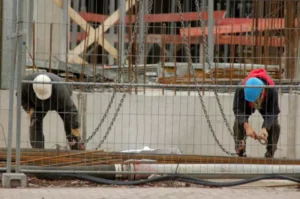
If so, this might explain why tombs were built on the northern part of the Saqqara plateau which has a higher altitude [45] and nothing was constructed inside the Trench until the reign of Userkaf and Unas (Vth Dynasty). As authentic sources from the working sphere of pyramid architects are currently lacking, no generally accepted wholistic model for pyramid construction exists yet. Although many detailed publications dedicated to pyramid-building procedures have given tangible elements [5, 6], they usually explain more recent, better documented, but also smaller pyramids [7]. https://forexarena.net/ These techniques could include ramps, cranes, winches, toggle lifts, hoists, pivots, or a combination of them [8–10]. Studies of the pyramid’s construction sites also revealed a high level of expertise in managing the hydraulic and hydrological environment, such as utilizing waterways to deliver materials, constructing ports and locks, or setting up irrigation systems [11, 12].
Contents
Beyond Technical Analysis : How to Develop and Implement a Winning Trading System
Assuming a storage depth between 1 and 2 meters, beyond technical analysis the retention capacity of the basin would be approximately 220,000–440,000 m3. This volume is in line with the overall water volume of a flash flood that could be produced by the Abusir wadi, which is estimated to be about 75,000–225,000 m3, assuming 50 mm of rainfall and a 0.30 runoff coefficient. This key, first structure of the Saqqara hydraulic system would have then delivered clear water downstream in normal time, as well as muddy water with an eventually suspended load of fine sand and clay during rainfall events.

1 Overview of the Djoser’s complex’ substructure
A paleo-drainage system can be identified upstream of the Gisr el-Mudir structure as the origin of the Abusir wadi (Fig 1, pink line). The boundaries of this runoff system form a catchment area never reported so far, although easily recognizable from the geomorphological imprints of surface paleochannels in the desert and on historical maps [52]. Although it currently has a 15 km2 surface area, we cannot rule out the possibility that the drainage divides shifted and changed due to land alterations and aeolian sand deposits over the past 4,500 years. After 16 years of trading, I have come to realize that mindset and beliefs are critical to achieving consistent success in the markets. Through personal experience and countless hours of market analysis, I’ve discovered that the psychological aspect of trading often makes the difference between consistent gains and recurring losses.
Trading ETFs: Gaining an Edge with Technical Analysis, Second Edition
According to Swelim, the moat’s south channel probably split into two parts, known as the Inner and Outer south channels [78] (Fig 8, blue strips). The Inner south channel is relatively shallow (5–7 m deep), 25–30 m wide, and spans approximately 350 m parallel to the southern wall of Djoser’s complex. Reported since the early 1800s, a former tributary to the Nile called the Bahr Bela Ma [53, 54] or ‘Wadi Taflah’ flowed parallel to the Abusir wadi catchment, less than two kilometers south of the Saqqara plateau. From satellite imagery, we identified that the Wadi Taflah arises from a drainage area of almost 400 km2 and consists of three main branches (Fig 2, numbered black dots) still visible from the desert’s geomorphological marks. This network is also visible on the radar imagery provided by Paillou [55] that can penetrate multiple meters of sand (S2 Fig in S2 File). The similarity of the optical and radar drainage patterns confirms the existence and old age of this hydrological network.
Pedological investigations would be worthwhile in the plateau area and in the talweg of both wadis to look for evidence of more frequent water flow. The south shaft is connected to a rectangular shaft to the west via a tunnel-like corridor with a staircase that descends approximately 30 meters before opening up into the south shaft (Fig 11, inset 2). At the corridor level, a chamber has been cut into the bedrock parallel to the descending passage [3], towards the south. This chamber features several incompletely excavated niches on its south wall, which could extend under the south wall of the Djoser complex (Fig 8). Taken together, the Deep Trench architecture highlights technical proficiency and suggests that the ancient Egyptians intended a technical function rather than a spiritual one.
On a large scale, the perfect geometric alignment of these compartments is remarkable, as well as their parallelism with the Djoser’s complex and their bottom level similar to those of the southern and northern shafts (≈27 m ASL). These spatial relationships have led some authors to consider that the trench was created as a part of Djoser’s Complex [86, 89, 90]. This assumption has been reinforced by Deslandes’ discoveries of at least two east-west pipes, about 80 m long, connecting the Djoser’s Complex’s subterranean layouts to the Dry Moat’s eastern side [91]. Furthermore, there is a proven connection between the tunnels surrounding the north shaft and the Dry Moat through the Deslandes’ pipes [91] on the eastern side of the complex (Figs 11 and 13). Pending further investigation, we hypothesize that the water inlet was located to the south (Fig 13, disk ‘1’), with the outlet(s) sending water toward the east through two juxtaposed pipes (disk ‘2’). Several horizontal galleries connected to these two pipes were acacia-cased [3], a technique commonly used to safeguard the walls in hydraulic works in ancient Egypt.
A large stone portcullis [108] found in one of these galleries may have served as a versatile gate closed during the water filling of the north shaft. The ‘south shaft’ is located ~200 m south of the north shaft, close to the Deep Trench (Fig 11, inset 1). The substructure of the south shaft is entered through a west-facing tunnel-like corridor with a staircase that descends about 30 m before opening up inside the shaft. The staircase then continues east and leads to a network of galleries whose layout imitates the blue chambers below the Step Pyramid.
- The first layer (Fig 5, ‘A’ dot) is made of roughly laid local limestone blocks forming a buttress against the inside of the facing blocks.
- The north shaft is surrounded by four comb-shaped structures distributed on each side and angled 90° apart.
- On a large scale, the perfect geometric alignment of these compartments is remarkable, as well as their parallelism with the Djoser’s complex and their bottom level similar to those of the southern and northern shafts (≈27 m ASL).
- Studies of the pyramid’s construction sites also revealed a high level of expertise in managing the hydraulic and hydrological environment, such as utilizing waterways to deliver materials, constructing ports and locks, or setting up irrigation systems [11, 12].
The Saqqara necropolis is located on a limestone plateau on the west bank of the Nile River, about 180 km from the Mediterranean Sea (Fig 1). The entire site lies in the desert, less than two kilometers from the plateau’s edge (elevation 40–55 m ASL—Above Sea Level), which overlooks the Nile floodplain (height ≈ 20 m ASL). Further to the west, the desert rises gently for about 20 km (hills’ top elevation ≈ 200–300 m ASL). Although detailed measurements of the Nile flood levels have been reported since the Vth Dynasty (2480 B.C.) [31–33], there is very little information available about the hydrology of its desert tributaries, known as ’wadis’, in ancient Egypt.
The current topography of the land around the Djoser complex, although uncertain given the natural or anthropogenic changes that have occurred over the last five millennia, does not support the existence of a trench to the east side. Therefore, our observations join those of Welc et al. [61] and some of the first explorers [63], reasonably attributing only three sections to the Dry Moat. To foster consistent execution, Beyond Technical Analysis provides software that enables you to “paper trade” your system. A demo disk of Chande’s $ecure trade management software and data scrambling utility will let you test your system on “true” out-of-sample data and track your emotions and P&L as you transition the system from computer table to trading desk. The new edition reflects my intense experiences as a Commodity Trading Advisor (CTA), developing systems, trading over 60 futures markets around the world and marketing services to clients. The additions to the second edition spring from my research to find effective answers to clients’ questions about trading systems, risk control procedures, and expectations of future performance.
Then, the third fill (C) consists of rough to fine sand and silt, small limestone fragments, and chippings with pebble and flint nodules. Finally, these A, B, and C backfill layers are positioned symmetrically to the median axis of the wall. Although a connection between the Compartment-2 and the Djoser shafts has yet to be identified, it is highly probable that sediment-free water from the Deep Trench was used in this system (Fig 13, disk ‘1’). This water quality would have reduced the risk of fouling and malfunction because it minimizes the presence of sand and clay that feed into the north shaft. This would prevent the deposition and progressive filling in the tunnels and connections, as well as the clogging of the joints between the bottom and side granite blocks of the box.





